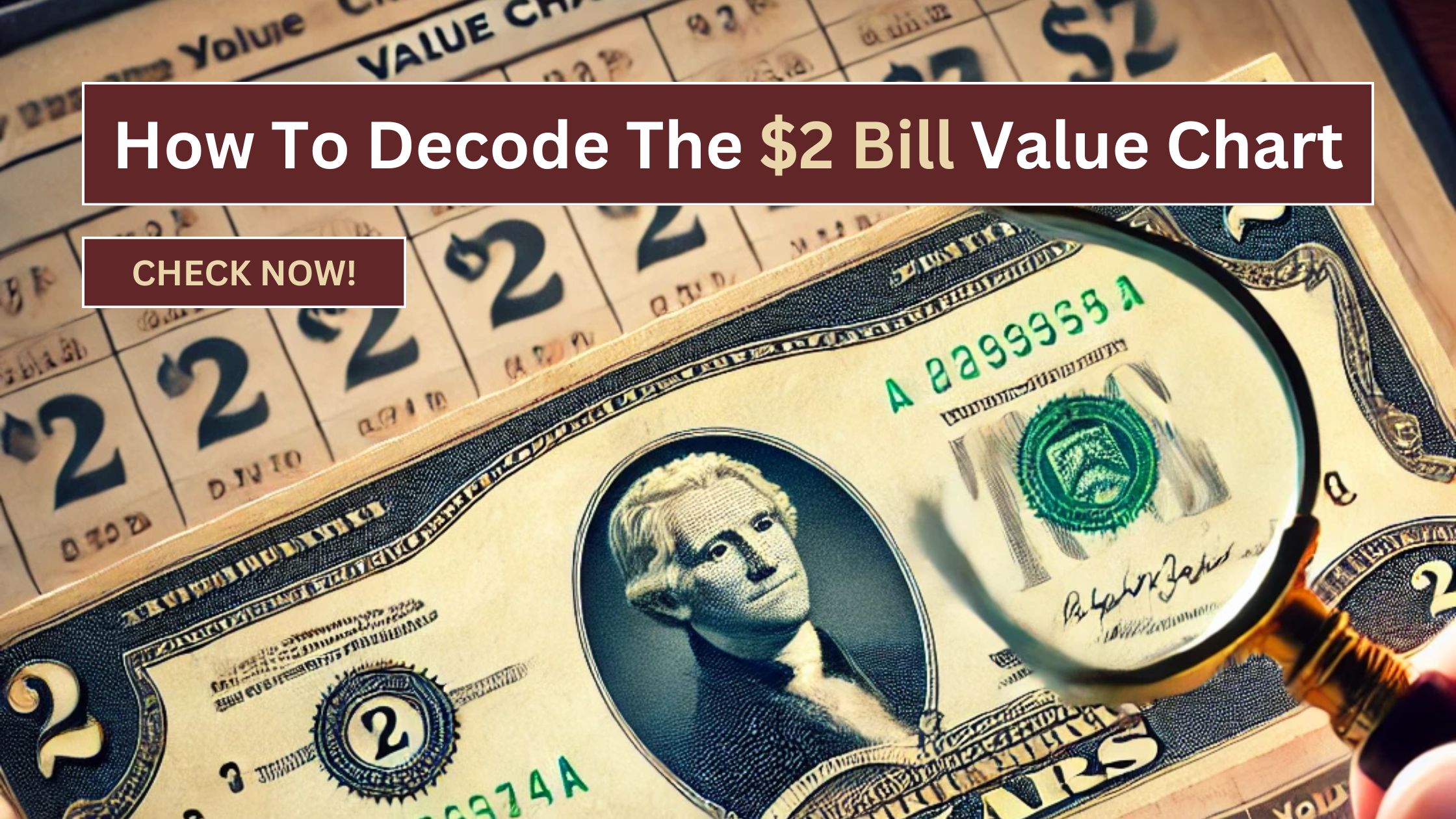The $2 Bill Value might seem like just another piece of U.S. currency, but some of these bills are worth far more than their face value. Collectors and enthusiasts search for rare $2 bills with special features that make them valuable. If you have a $2 bill, you might be sitting on a hidden gem without even knowing it!
In this guide, we’ll explain how to read the $2 bill value chart, what factors affect a bill’s worth, and how to spot rare and valuable bills.
What Is the $2 Bill Value Chart?
The $2 bill value chart is a guide used to determine how much a specific bill is worth. The chart takes into account factors like the year of issue, condition, serial number, and unique features. Some $2 bills are highly sought after by collectors and can be worth hundreds or even thousands of dollars.
Key Factors That Affect a $2 Bill’s Value
To determine if your $2 bill is valuable, check these important factors:
1. Series Year
The series year is the year the bill was issued. Older series bills are often worth more, especially if they are in good condition. Here are some key years to look for:
- 1928 Series – The first small-sized $2 bill, featuring Thomas Jefferson. Uncirculated versions can be worth up to $4,500.
- 1953 Series – A redesigned version. Star notes from this year can reach $1,200.
- 1963 Series – The first to include the phrase “In God We Trust.” Bills with special serial numbers can be worth $600.
- 1976 Series – Issued for the U.S. Bicentennial. First-day issue bills with postmarks can be valued up to $50.
2. Condition of the Bill
A $2 bill in mint condition will always be worth more than one that is worn or damaged. Collectors categorize bill conditions as follows:
- Uncirculated (CU): Perfect, crisp, and free from folds.
- Extremely Fine (EF): Minimal wear, a few light folds.
- Fine (F): Visible creases and some discoloration.
- Good (G): Heavy wear, stains, or tears.
3. Serial Numbers
Certain serial numbers make a $2 bill more valuable:
- Low Serial Numbers – Bills with numbers like 00000001 are highly collectible.
- Repeater Numbers – Patterns like 121212 or 555555 increase desirability.
- Radar Numbers – Numbers that read the same backward and forward, such as 1234321.
- Star Notes – Bills with a star (*) next to the serial number. These are replacement notes and can be worth significantly more.
4. Printing Errors
Errors during printing can make a bill much more valuable. Look for:
- Misaligned Printing – The design is off-center.
- Foldovers – Part of the bill was folded during printing.
- Double Prints – A blurry or double image appears.
- Inverted Back – The back of the bill is printed upside down.
Bills with these errors can sell for much more than face value.
How to Spot a Valuable $2 Bill
Follow these steps to check if your $2 bill is worth more than $2:
Step 1: Check the Series Year
Look at the year printed on the front of the bill. If it’s an older series, especially from 1928 or 1953, it may be worth more.
Step 2: Examine the Condition
Hold your bill under good lighting. If it’s crisp with no folds or stains, it may have a high value. Uncirculated bills are always more valuable.
Step 3: Look for Special Serial Numbers
Check the serial number. If it’s a low number, a repeater, or a radar number, your bill could be highly collectible. Also, look for a star note symbol next to the number.
Step 4: Inspect for Errors
Examine the bill for printing mistakes, such as misaligned text, doubled images, or upside-down printing. These errors make bills more valuable to collectors.
Examples of Valuable $2 Bills
| Bill Description | Potential Value |
|---|---|
| 1928 Series, Uncirculated Condition | Up to $4,500 |
| 1953 Series, Star Note | Up to $1,200 |
| 1976 Series, First Day Issue | Up to $50 |
| 1963 Series, Radar Serial Number | Up to $600 |
| 1890 Series, Misprint Error | Up to $3,000 |
| USA NEWS | CLICK HERE |
| AUSTRALIA NEWS | CLICK HERE |
FAQ’S
Q1: Are $2 bills still in circulation?
A1: Yes, $2 bills are still legal tender and are available at most banks. However, they are less commonly used in daily transactions, which makes them more of a curiosity for some people. Collectors often seek out rare or unique $2 bills for their collections.
Q2: How can I tell if my $2 bill is valuable?
A2: To determine if your $2 bill is valuable, check the series year, condition, serial number, and look for printing errors. Star notes, low serial numbers, and error bills are typically worth more than regular bills.
Q3: Why are star notes more valuable than regular $2 bills?
A3: Star notes are replacement bills printed when a regular bill is damaged or misprinted during the production process. Since they are produced in smaller quantities, they are considered rarer and more valuable to collectors.
Q4: How do I sell my $2 bills?
A4: You can sell your $2 bills through coin dealers, online auction sites, or numismatic conventions. For bills that are particularly rare or valuable, consider having them graded and authenticated by a professional service to ensure you receive the best price.
Q5: How rare are the 1928 $2 bills?
A5: The 1928 $2 bill is considered rare, especially in uncirculated condition. The older series tend to be more valuable, particularly those in excellent condition, as fewer of these bills were printed and are still in circulation today.
